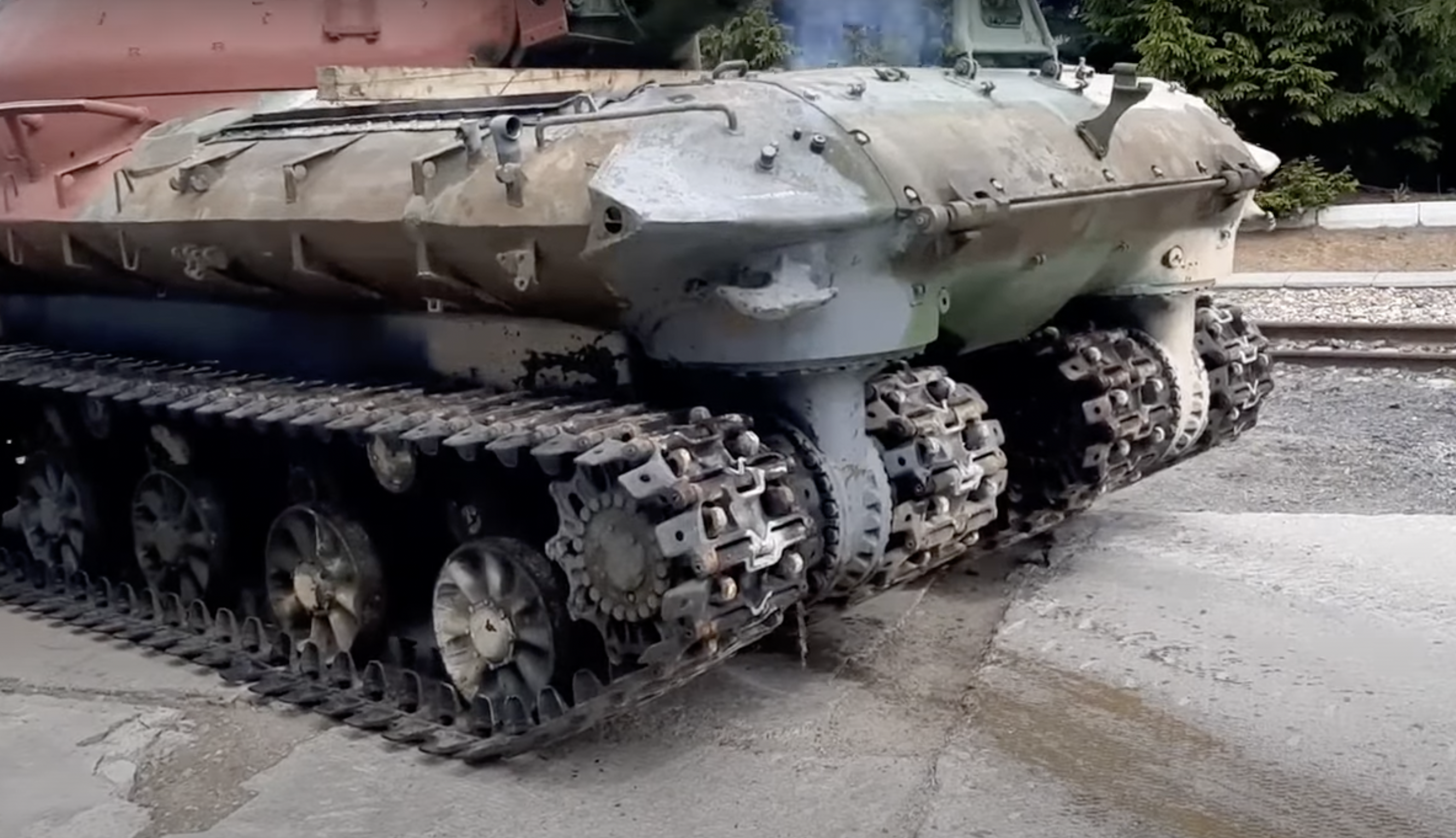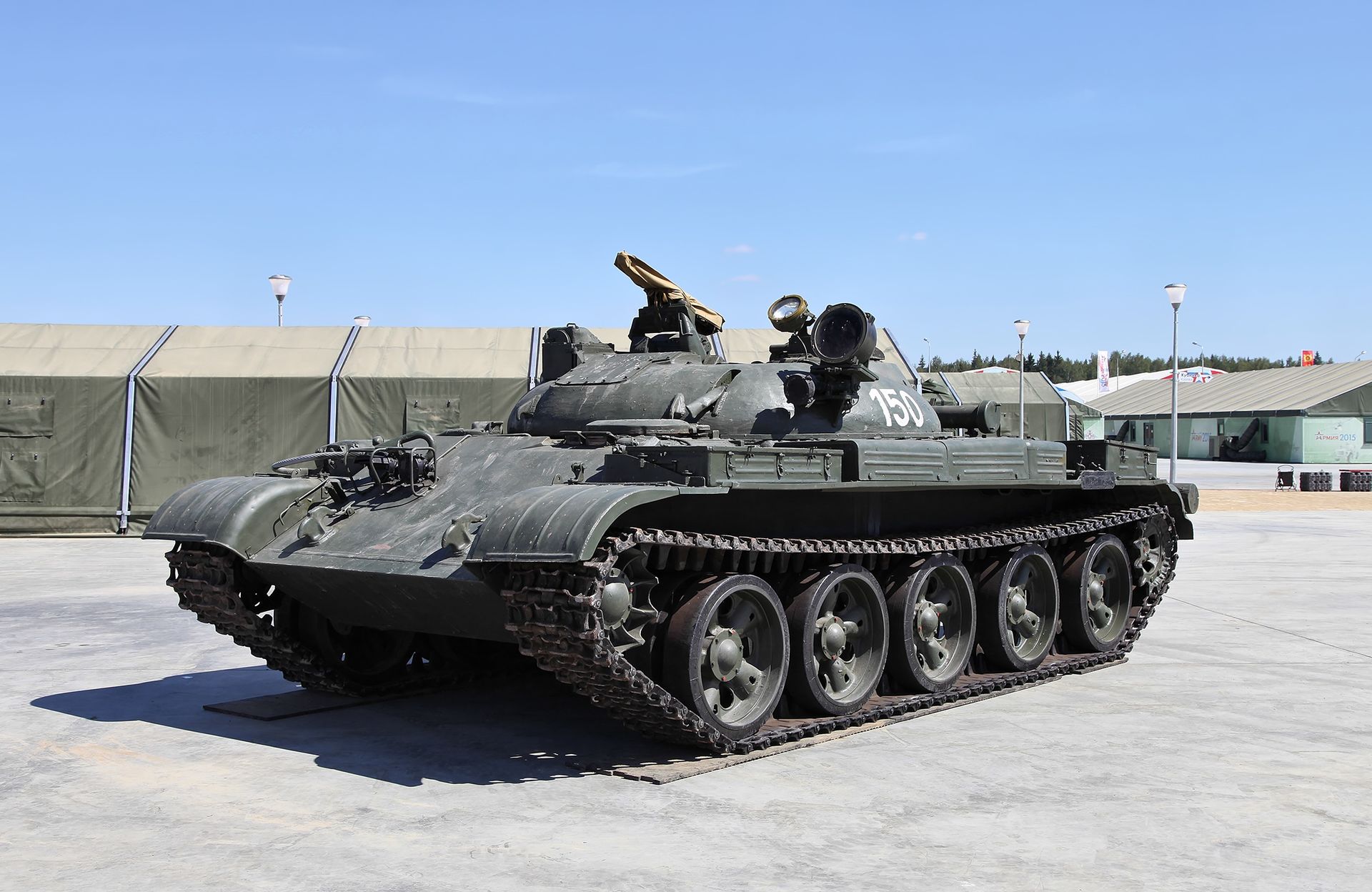Of the many developments in armored warfare during the Cold War, the race to build the biggest and heaviest tanks to smash through enemy defensive lines and fortifications produced some of the most impressive designs. Among the heavy tanks of this era, the remarkable Object 279 developed by the Soviet Union was perhaps the most awe-inspiring. While this 66-ton behemoth, with its bizarre hull form and four sets of tracks, never entered production, a prototype is back in working order again in Russia.

A video from the Kubinka Tank Museum, outside Moscow, shows that work to return Object 279 to running order has been successful. With a diesel roar and no shortage of smoke, the big tank is seen creeping forward before a brief, but noisy test run on the museum grounds, its turret traversed to the rear. Details of the restoration work and how long it took are elusive, for now, but the effort has clearly addressed both the engine and running gear, as well as the hull and turret, which have been partly painted in red primer ahead of a likely complete respray. Most sources indicate that this is the only surviving Object 279 tank anywhere in the world.
But what of its history? The Object 279 was the logical extension of the successful Iosef (Josef) Stalin series of heavy tanks developed by the Soviet Union during World War II. These culminated in the IS-3 before the end of that conflict and work continued to refine this design in the immediate postwar period, leading to the T-10 that was accepted for service in 1953. Weighing around 57 tons, the T-10 was armed with a 122mm caliber gun that was intended to challenge tanks like the U.S. M103 and the British Conqueror.

The Object 279, development of which began at Leningrad’s Kirov Plant in 1957, had an even harder-hitting main armament, in the shape of a 130mm M-65 rifled gun, and 24 rounds of ammunition for it. A semi-automatic loading system provided a rate of fire of five to seven rounds per minute. The gun was equipped with a stabilization system for accurate firing on the move and was allied with an optical rangefinder, automatic guidance system, and a night-sight incorporating an infrared searchlight. Features like these were very much state-of-the-art for this period. Alongside the main gun was also a coaxial 14.5mm heavy machine gun.
As well as a gun that was expected to provide dominance on the battlefield, the overall design of the tank was radical. Heavy tanks were traditionally cumbersome vehicles, best suited to flat terrain, lumbering around and providing long-range fire support to medium tanks. The Object 279, however, was optimized for moving more quickly across rough terrain, aided by its four sets of tracks, more or less equally spaced under the hull, and combined to operate as pairs on each side. The tracks themselves were mounted on longitudinal hollow beams that also contained fuel for the engine. The track footprint provided a ground pressure of around 8.5 pounds per square inch (PSI). The American M48 Patton, a first-generation main battle tank, meanwhile had a ground pressure of around 12 PSI. The result, apparently, allowed the Soviet vehicle to move without difficulty over swampy, soft ground, and even across tree stumps. It was also said to be able to negotiate a range of anti-tank obstacles, including ‘Czech hedgehogs.’

Powered by a 16-cylinder, 1,000-horsepower diesel engine, the Object 279 was able to make a top speed of 34 mph and range, with a single refueling, was 186 miles. The T-10, by way of comparison, had a speed of 26 mph and an operational range of 150 miles.
The Object 279 was well protected, with a maximum armor thickness of around 12.5 inches, compared to a maximum of 10.7 inches on the T-10. However, the armor design overall was more revolutionary, composed of an arrangement of all-cast structures, many of them sloped for extra protection to help deflect armor-piercing and shaped-charge ammunition. Outside of these armored structures was an additional elliptical shield around the hull, intended to trigger high-explosive anti-tank (HEAT) projectiles, which do not rely primarily on kinetic force for penetration. The turret was also all-cast, again with a protective anti-HEAT shield.

The unconventional hull shape was also expected to make the tank much less likely to flip over in a nuclear blast. Since it was expected to fight on a nuclear battlefield, the crew was also provided with nuclear, biological, and chemical (NBC) protection systems.
The crew of the tank consisted of four, with the commander, gunner, and loader in the turret and the driver in the front of the hull.
By 1959, a prototype Object 279 was available, but the writing was already on the wall for the heavy tank concept in general. From the early 1960s onwards, the Soviet Union rapidly began demoting its heavy tanks to the reserves or decommissioning them entirely, relying instead increasingly upon more agile and faster medium tanks, like the T-54/55 and T-62, and ultimately main battle tanks, starting with the T-64, which remains in frontline service today. Offering a balance of firepower, protection, and mobility, MBTs were to spearhead a revised form of more rapidly moving, combined-arm units, with tanks accompanied by infantry in armored personnel carriers, and supported by rockets and missiles. Heavy tanks, meanwhile, started to look like throwbacks to a previous age of armored warfare.
Missiles, too, aided the demise of the Object 279. Ever the advocate of guided weapons, by the late 1950s, Soviet Premier Nikita Khrushchev was a proponent of missile-armed tanks, which were expected to at least match the firepower of ones with guns, but which would be more accurate, lighter, and more mobile.

The dream of the missile tank never properly took off, however, hampered by the primitive anti-tank guided missiles available at the time. Still, Khrushchev did sign the death warrant for the heavy tank when he stipulated that any new tank to be added to the Soviet inventory should not exceed a weight of 41 tons. Such designs would not only be cheaper to produce but would ensure that they were able to negotiate the roads and bridges that would be encountered in an armored thrust across central Europe.
As for the Object 279, of which only three were built, even if the Soviet leadership had continued to promote the development of heavy tanks, it’s possible that problems encountered in its early development would have proved insurmountable anyway. Reportedly, the prototype suffered from worse than expected agility, a high degree of complexity making field repairs difficult, and issues with its running gear.

Nevertheless, even today, the Object 279 remains an imposing design and an innovative high-point of the prolific Soviet tank-building industry. It’s unclear why this vehicle, in particular, was chosen to be returned to working order, but the result is a unique piece of Cold War history. With a probably unrivaled collection of armored vehicles at Kubinka, it might be hoped that other rare tanks might be brought back to life in this way as well.
At a time when modern Russian armor is struggling to make a meaningful impact during the campaign in Ukraine, there’s also the possibility that the Object 279 provides something of a focal point for the country’s military enthusiasts, recalling as it does a time when Soviet armor was always expected to break through if it was ever committed to action on a significant scale.
Contact the author: thomas@thedrive.com
